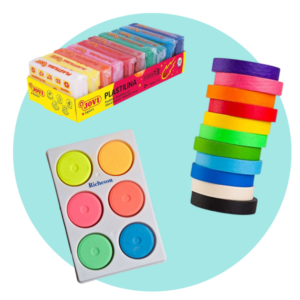I noticed something interesting the other day at our neighborhood diner. A family sat down near us, and within minutes, the kids were bouncing between booths while the parents scrolled their phones.
The server nearly collided with a running child while carrying a tray of hot plates.
It got me thinking about how much our restaurant behavior reveals—not about our worth as people, but about what we were taught (or weren’t taught) about navigating shared spaces.
Here’s the truth: a lot of folks don’t realize their restaurant habits might be sending signals they don’t intend. Not because they’re doing anything wrong, exactly, but because certain behaviors quietly communicate unfamiliarity with dining out or financial strain in ways that can feel uncomfortable.
This isn’t about judging anyone. We all have different upbringings and different comfort levels with restaurants. But understanding these patterns can help us navigate dining experiences with more confidence and ease.
1) Stacking dishes to “help” the server
This one comes from a genuinely helpful place. When I was teaching kindergarten, I always appreciated when kids cleaned up after themselves. That instinct carries over into adulthood—you want to make life easier for the person clearing your table.
The thing is, restaurant servers have a specific system for clearing plates. They’re trained to stack and carry dishes in a particular way that’s efficient and safe. When you pre-stack everything, it can actually disrupt their flow and sometimes make their job harder.
I learned this from a friend who waited tables through college. She explained that the way dishes are stacked matters for balance, and that certain items need to be separated (like glassware from plates). What looks helpful to us can create extra steps for them.
Leaving your plates where they are shows you trust the professional to do their job. It’s not laziness—it’s respect for their expertise.
2) Making homemade lemonade at the table
Water with lemon and sugar packets from the caddy—I’ve definitely seen this move. It’s practical if you’re watching every dollar, and there’s nothing shameful about being budget-conscious.
But in certain settings, this habit can signal financial discomfort in a way that draws attention. The subtle message is “I can’t afford a $3 lemonade,” which might not be the impression you want to make, especially in professional or social situations.
Related Stories from The Artful Parent
Matt and I are pretty conscious about our spending. When we do take Ellie and Milo out to eat (which isn’t often), we budget for actual drinks if we’re ordering them. If we’re in true savings mode, we stick with water and don’t try to engineer something else.
There’s dignity in being straightforward about your choices rather than working around them.
3) Over-explaining dietary restrictions or making excessive substitutions
I get it—I really do. After Ellie developed eczema as a baby, I became hyperaware of ingredients and started eliminating certain things from our home. I know what it’s like to need modifications.
But there’s a difference between “I’m allergic to shellfish” and launching into a ten-minute explanation of your wellness philosophy while requesting seven different substitutions that essentially rebuild the dish from scratch.
When you dramatically customize every order, it can come across as unfamiliarity with restaurant culture. Chefs design dishes with specific flavor combinations in mind. Reasonable accommodations are one thing, but trying to turn the menu into exactly what you’d make at home suggests you might not be comfortable letting someone else take the lead.
If you have genuine dietary needs, state them simply and clearly. If you’re just picky, maybe order something closer to what you actually want rather than forcing the kitchen to create something entirely different.
4) Not understanding tipping culture
This is a big one. In the U.S., servers often make less than minimum wage because tips are expected to make up the difference. It’s not ideal, but it’s the system we have.
When people don’t tip appropriately, it reveals that nobody explained American restaurants’ reality: the menu price doesn’t include compensating your server directly.
I’ve seen people leave $2 on a $40 bill, or skip tipping entirely because “the service was just okay.” Unless something was genuinely terrible (and even then, there are better ways to address it), standard tipping is 18-20% minimum.
When Matt and I were first married and money was tighter, we simply ate out less often. We’d rather skip a restaurant meal than undertip someone who’s working hard. That’s the respectful choice.
5) Treating complaints like confrontations
Last month, my salmon came out overcooked at a place near the farmers market. The inside was dry and chalky instead of tender. I didn’t make a scene—I just caught our server’s eye and said calmly, “I think this might have been in a bit too long. Would it be possible to get another piece?”
The difference between handling an issue gracefully and making a production out of it is huge. People who aren’t used to dining out sometimes either suffer in silence (eating something they’re unhappy with) or explode in indignation when things go wrong.
Both extremes reveal discomfort with the restaurant dynamic. Mistakes happen in kitchens. Good restaurants want to fix them. Stating the problem clearly and calmly, without drama, shows you understand this is normal and not a personal offense.
6) Letting kids treat the restaurant like a playground
Look, I know kids are kids. Milo is two and full of energy. Ellie gets restless after sitting for too long. I’m not expecting silent, motionless children at the dinner table.
But there’s a difference between normal kid energy and allowing your children to run wild through a restaurant while you ignore them. When kids are racing between tables, climbing on booths, or shrieking at full volume while parents scroll their phones, it creates chaos for everyone—especially servers carrying hot dishes.
This isn’t about being a perfect parent. It’s about recognizing that restaurants are shared spaces. Before we head out anywhere, I talk to the kids about expectations. We bring quiet activities. We take breaks outside if someone needs to move.
Teaching kids to function in public spaces is part of raising humans who can navigate the world with awareness and respect.
7) Misreading the dress code or atmosphere
Every restaurant has a vibe. Some are come-as-you-are casual. Others expect a certain level of effort in your appearance. Reading the room and dressing appropriately shows you understand the environment you’re entering.
Showing up in beach flip-flops and a tank top to a place with white tablecloths signals either defiance or obliviousness. Neither is a great look.
This doesn’t mean you need expensive clothes. It means matching your presentation to the setting. Clean, neat, and appropriate goes a long way. I keep one nicer outfit in my closet for the rare occasions when we go somewhere that calls for it.
When you respect the atmosphere a restaurant is trying to create, you show you can adapt to different social contexts. That’s valuable currency in all kinds of situations, not just dining.
8) Being invisible to or dismissive of staff
I spent seven years teaching kindergarten before becoming a writer and parent educator. That experience taught me how exhausting service work is, and how much it matters when people see you as a person rather than a function.
The way you treat restaurant staff—whether you make eye contact, use their name if they offer it, say “please” and “thank you,” acknowledge their humanity—reveals everything about your character.
Snapping fingers, waving aggressively, saying “hey you,” or treating servers like they’re beneath your notice isn’t just rude. It exposes that no one taught you about the social contract of service.
At our house, Matt and I model respect for everyone we encounter. When we’re at the farmers market and Ellie asks a vendor a question, I make sure she says thank you. When we’re out to dinner and our server brings Milo his milk, I prompt him to say thank you too (or I say it for him if he’s too shy).
This isn’t about class—it’s about recognizing that everyone deserves basic dignity and kindness.
9) Being oblivious to the rhythm of service
Servers have timing. They check in after you’ve had a chance to taste your food. They clear when everyone’s finished. They bring the check when coffee’s done or when you signal you’re ready.
Some people remain completely unaware of these rhythms. They’re deep in conversation while the server hovers with hot plates waiting for a pause. They demand attention during the busiest moments. They miss every subtle cue that says “we’re trying to help you, but we need you to meet us halfway.”
This isn’t meanness—it’s just not knowing how to read the dance between dining and service. Nobody taught them to pay attention to what’s happening around them.
Being aware doesn’t mean you can’t relax and enjoy yourself. It just means noticing when someone’s trying to do their job and making it easier for them to do it well.
Final thoughts
None of these habits define your worth as a person. And honestly? We all have blind spots. I’m sure I do things that reveal my own background and limitations.
The point isn’t to feel judged or ashamed. It’s to recognize that restaurant behavior is learned, and if we weren’t taught these things growing up, we can still learn them now.
Dining out is about more than just food. It’s about navigating shared space with grace, treating people with respect, and being aware of the signals we’re sending whether we intend to or not.
The beautiful thing is that awareness creates choice. Once you know these patterns exist, you can decide how you want to show up. You can teach your kids what you wish you’d learned earlier. You can move through the world with a little more confidence and a little more kindness.
And that makes every experience—restaurant or otherwise—better for everyone involved.










